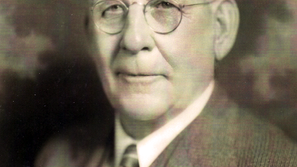Dead man walking in Madera
- Bill Coate
- Apr 27, 2018
- 3 min read

Madera County Historical Society
Soldiers line up for drill at Camp Kearny during World War I. The Army sent Frank Pira here in June 1918. Four Months later, he was declared “killed in action.”
When Madera observed Armistice Day in 1923, Frank Pira was part of the crowd. They gathered that day around the soldiers’ memorial plate in Arbor Vitae Cemetery to remember those who had been killed in action during WW I.
As Pira listened to the roll call and looked at the names on the memorial, he must have felt a tinge of irony. There it was for all to see. His name was on the plate. For four years Madera had thought he was dead, and for four years, he had been trying to convince everybody that he was alive.
It all started when the 27 year-old immigrant from Italy was drafted into the U.S. Army in June 1918. They sent him to Camp Kearny where he joined Company K of the 125th U.S. Infantry. One month later, he became a United States citizen and was shipped overseas to fight for his adopted country.
In October, one month before the war ended, Pira fell victim to a gas attack on a battle field in France. As he lay there, unconscious and covered with dirt and debris, he was taken for dead. They removed his identity tags and added the name of Frank Pira to the U.S. casualty list.
Shortly thereafter he was found conscious and was taken to a French hospital where he remained for 10 days. Upon his release, he attempted to rejoin his company, and that is where his trouble began.
When he reported in as Frank Pira, the authorities thought he was an imposter and refused to accept him. He was soon to discover that the whole world thought he was dead — the Army, his parents in Italy, people in Madera, everybody!
After being rejected by the Army, he made his way to his parent’s home in Italy and found that they had been informed of his demise. With that he decided to return to Madera on his own, but because he was listed as killed in action, he could not get a passport. So there in Italy he remained, searching for a way to get home.
Pira was armed with abundant evidence that he was dead. His parents had three death certificates, one from the French Republic, one from the Adjutant General of the Army, and one signed by General John J. Pershing.
The only proof that he had that he was alive was his word for it, and this no one would believe. So Pira took the only door open to him. He took his place in the long line of immigrants who were waiting for a chance to go to America.
Meanwhile, in Madera they mourned his death and remembered him on Armistice Day.
For four years, Pira waited in Italy to get an immigrant visa. Finally, in 1922 he was able to board a steamship for the long awaited return voyage home.
For some reason, Pira went to Merced to live, but he sought out Sam B. Hern, the commander of the Madera American Legion, for assistance in solving the conundrum.
In his meeting with Hern, Pira explained his tale of woe. He had come to Madera in 1912 and had been drafted in 1918. He was sent into the war where he was the victim of a gas attack three months later. After 10 days in the hospital, he had been denied readmission into the U.S. Army because he was “dead”—forced to reject payment of his own $10,000 life insurance policy-denied readmission into the United States and finally forced to return here as an immigrant after four years of waiting.
In short, Pira was a man without a country and would remain so unless the mountain of red tape was unrolled so that he could regain his citizenship.
Thankfully, Hern was able to clear up the tangled story through the Legion’s office in Washington D.C., and Frank Pira was restored to his status as a full-fledged citizen.
As we stated above, Pira took part in Madera’s Armistice Day observance in 1923, but before he did, he went down to McCumber and Pinion’s Drug Store on Yosemite Avenue with one of his death certificates, which he put on display. He wanted to make sure that everyone knew that he had been a dead man walking.


























Comments